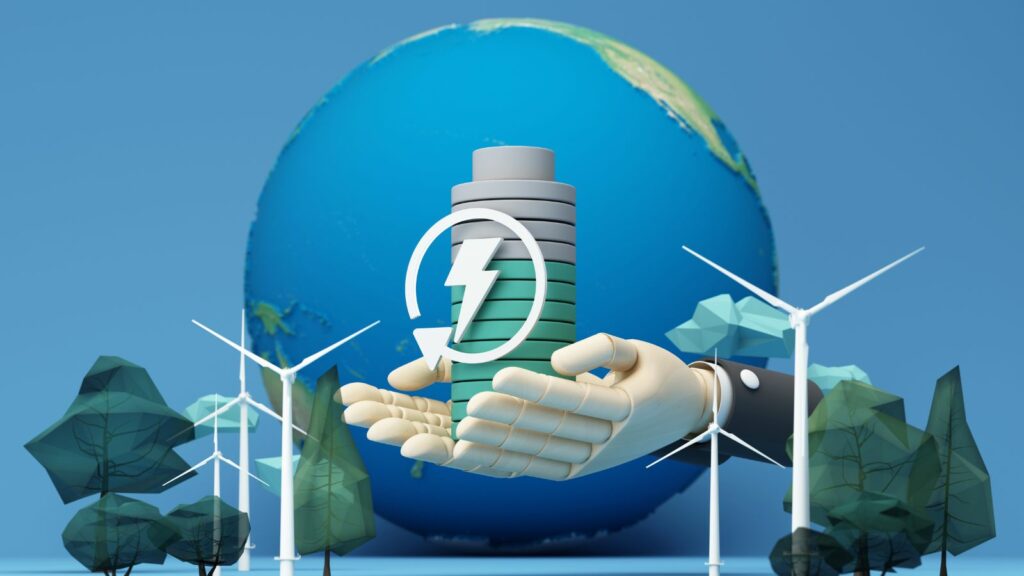In an era where environmental concerns are at the forefront, green energy background emerges as a beacon of hope. With the pressing need to combat climate change, the shift from traditional fossil fuels to sustainable energy sources is more crucial than ever.
Green Energy Background
Green energy background originates from natural sources that replenish themselves over short periods. It’s considered environmentally friendly due to its minimal impact on the planet.
Defining Green Energy

Green energy refers to power generated from renewable resources such as sunlight, wind, water, and organic materials. These sources produce energy with negligible carbon emissions. Unlike fossil fuels (e.g., coal, oil), green energy sources do not diminish over time, ensuring a sustainable supply. Solar panels, wind turbines, and hydroelectric dams exemplify systems that harness these energies to produce electricity.
The Importance of Green Energy
Green energy plays a crucial role in reducing carbon footprints and mitigating climate change. By transitioning to renewable sources, societies cut down on greenhouse gases, which contribute to global warming. Furthermore, adopting green energy enhances energy security, reducing reliance on imported fuels and promoting national energy independence. An increasing number of governments are investing in renewable energy infrastructure, recognizing its potential for long-term environmental and economic benefits.
Benefits of Green Energy
Green energy background provides various advantages, enhancing both environmental and economic landscapes. By prioritizing renewable resources, societies can achieve substantial progress toward a sustainable future.
Environmental Advantages
Green energy significantly reduces harmful emissions. Renewable sources like solar, wind, and hydro produce negligible carbon emissions compared to fossil fuels. This reduction helps combat climate change and decrease air pollution, improving public health. Additionally, utilizing renewable resources minimizes the depletion of finite natural resources by relying on naturally replenished energy forms.
Economic Impact

Investing in green energy generates economic growth. Renewable energy sectors create jobs in manufacturing, installation, and maintenance, supporting regional economies. Furthermore, green energy reduces dependency on imported fuels, stabilizing energy prices and enhancing national energy security. As the cost of renewable technologies continues to drop, they become more competitive, driving further investments.
Challenges Facing Green Energy
Green energy, despite its potential benefits, encounters several challenges that hinder its widespread adoption and implementation.
Technological Barriers
Green energy technologies encounter obstacles such as storage and efficiency. Energy storage remains a significant challenge; for instance, solar and wind power require advancements in battery technology to store energy for times when the sun isn’t shining or the wind isn’t blowing. Efficiency limitations persist, with photovoltaic cells often converting less than 20% of solar energy into electricity. Achieving higher efficiencies is crucial for maximizing output and reducing costs.
Policy and Regulation Issues
Policy and regulatory hurdles affect the growth of green energy. Inconsistent policies across regions can create uncertainty for investors and developers. For example, varying levels of government support, such as tax incentives and subsidies, impact project feasibility. Regulatory frameworks sometimes lack the adaptability needed to incorporate new technologies, delaying deployment and integration. Moreover, permitting processes for renewable projects are often lengthy and complex, deterring potential investment.
The Future of Green Energy
Green energy is poised for a transformative future, driven by innovations and increasing global initiatives.
Innovations and Trends
Advancements in green technology are revolutionizing energy production and consumption. Solar power now integrates with smart grids, allowing for efficient energy distribution and storage. Wind turbines have evolved with increased capacity, harnessing more power even at low wind speeds. Emerging technology like floating solar panels and vertical-axis wind turbines demonstrate innovative approaches to maximizing energy capture.
Global Green Energy Initiatives

Governments worldwide are implementing ambitious green energy policies to address climate change. The European Union’s Green Deal aims to make Europe climate-neutral by 2050, promoting investments in renewable infrastructure. In Asia, China leads with significant investments in solar and wind energy to reduce its carbon footprint. The United States promotes renewable energy through tax incentives and funding for clean energy projects.
Harnessing Natural Forces
Green energy is pivotal in shaping a sustainable future by addressing environmental challenges and reducing reliance on finite resources. Its historical evolution showcases humanity’s ingenuity in harnessing natural forces for power. As technology advances and policy frameworks improve, the transition to renewable energy becomes more attainable.

